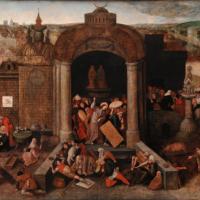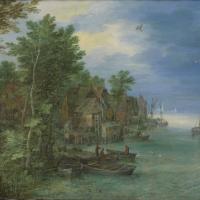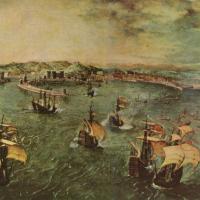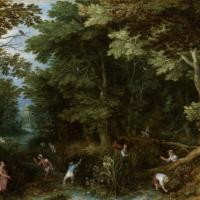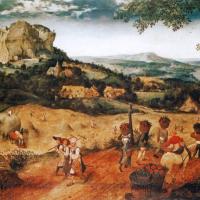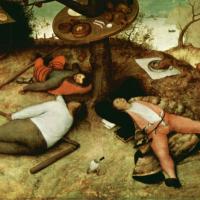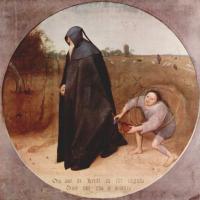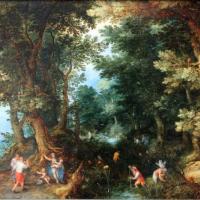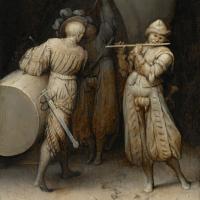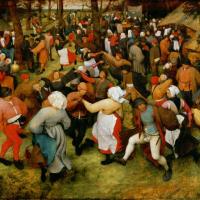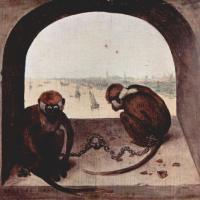Pieter Bruegel The Elder
Hafen Von Neapel
$540.00
Latona En De Lycische Boeren
$540.00
The Hay Harvest
$540.00
The Land Of Cockaigne
$540.00
The Misanthrope
$510.00
The Mocking Of Latona
$540.00
The Three Soldiers
$510.00
The Wedding Dance
$540.00
Zwei Affen
$510.00
Pieter Bruegel The Elder
Pieter Bruegel The Elder (1525,1530–1569)
Pieter Bruegel (also Brueghel) the Elder (1525-1530 – 9 September 1569) was the most significant artist of Dutch and Flemish Renaissance painting, a painter and printmaker from Brabant, known for his landscapes and peasantscenes (so called genre painting); he was a pioneer in making both types of subject the focus in large paintings.
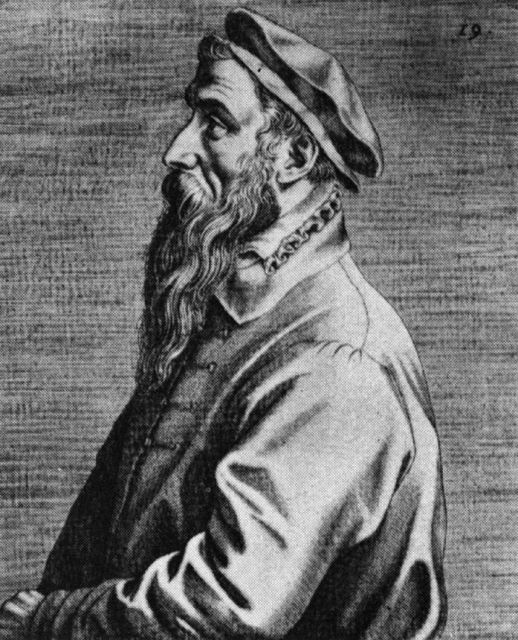
He was a formative influence on Dutch Golden Age painting and later painting in general in his innovative choices of subject matter, as one of the first generation of artists to grow up when religious subjects had ceased to be the natural subject matter of painting. He also painted no portraits, the other mainstay of Netherlandish art. After his training and travels to Italy, he returned in 1555 to settle in Antwerp, where he worked mainly as a prolific designer of prints for the leading publisher of the day. Only towards the end of the decade did he switch to make painting his main medium, and all his famous paintings come from the following period of little more than a decade before his early death, when he was probably in his early forties, and at the height of his powers.
As well as looking forwards, his art reinvigorates medieval subjects such as marginal drolleries of ordinary life in illuminated manuscripts, and the calendar scenes of agricultural labours set in landscape backgrounds, and puts these on a much larger scale than before, and in the expensive medium of oil painting. He does the same with the fantastic and anarchic world developed in Renaissance prints and book illustrations.
He is sometimes referred to as "Peasant Bruegel", to distinguish him from the many later painters in his family, including his son Pieter Brueghel the Younger(1564–1638). From 1559, he dropped the 'h' from his name and signed his paintings as Bruegel; his relatives continued to use "Brueghel" or "Breughel".
There are about forty generally accepted surviving paintings, twelve of which are in the Kunsthistorisches Museum in Vienna. A number of others are known to have been lost, including what, according to van Mander, Bruegel himself thought his best work, "a picture in which Truth triumphs".
Bruegel only etched one plate himself, The Rabbit Hunt, but designed some forty prints, both engravings and etchings, mostly for the Cock publishing house. As discussed above, about sixty-one drawings are now recognised as authentic, mostly designs for prints or landscapes.


